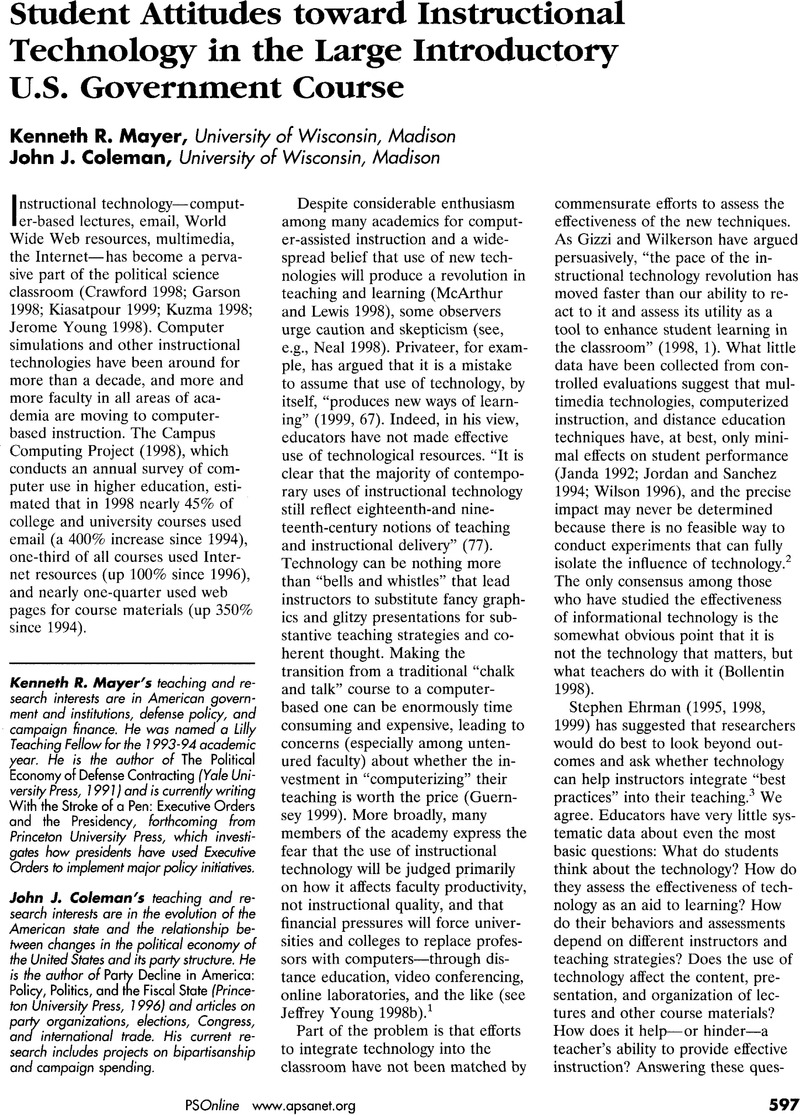Crossref Citations
This article has been cited by the following publications. This list is generated based on data provided by Crossref.
Turner, Charles C.
2005.
A New Honesty for a New Game: Distinguishing Cheating from Learning in a Web-Based Testing Environment.
Journal of Political Science Education,
Vol. 1,
Issue. 2,
p.
163.
Hagel, Pauline
and
Shaw, Robin N.
2006.
Students' Perceptions of Study Modes.
Distance Education,
Vol. 27,
Issue. 3,
p.
283.
Mathews, A. Lanethea
and
LaTronica-Herb, Alexandra
2013.
Using Blackboard to Increase Student Learning and Assessment Outcomes in a Congressional Simulation.
Journal of Political Science Education,
Vol. 9,
Issue. 2,
p.
168.



